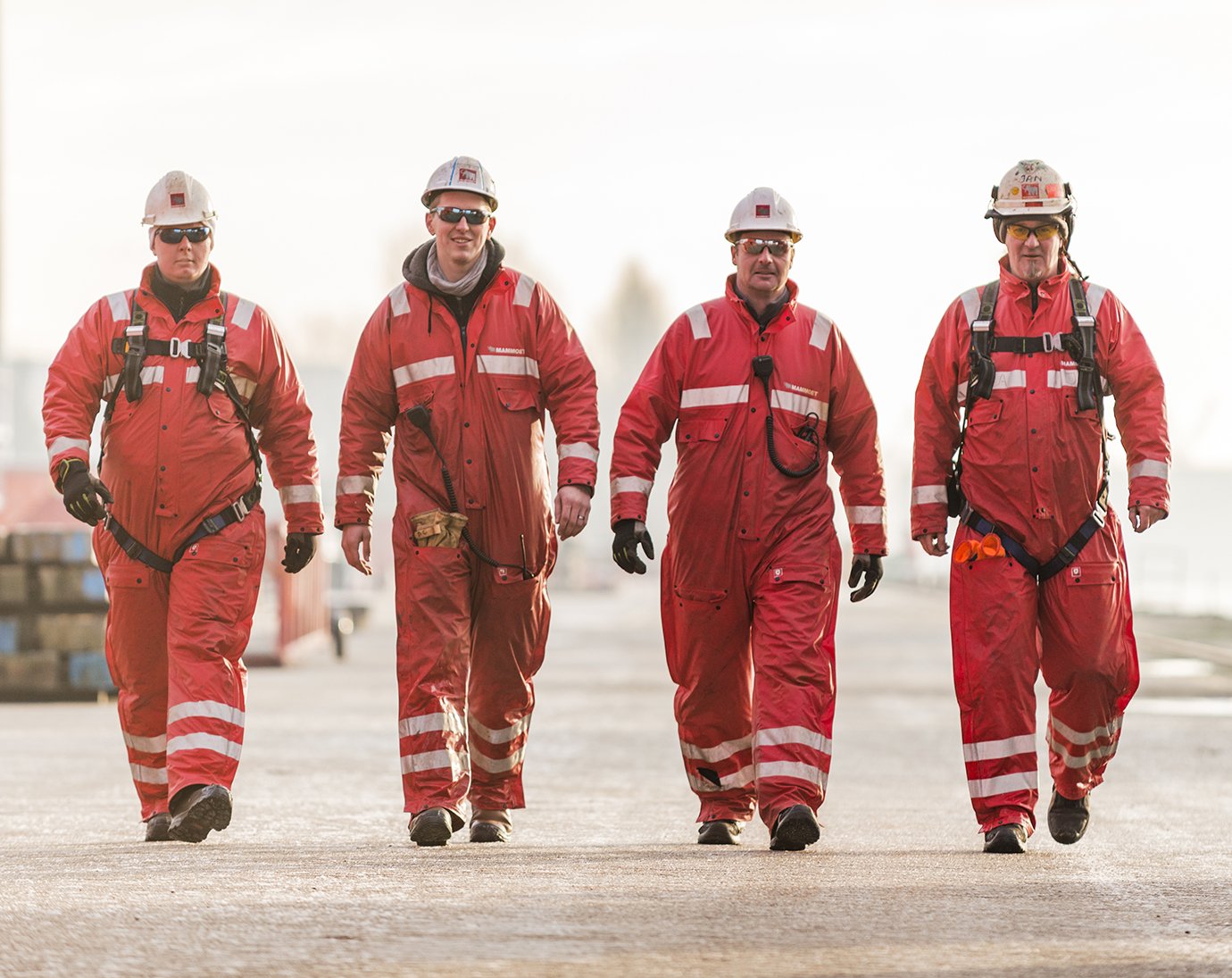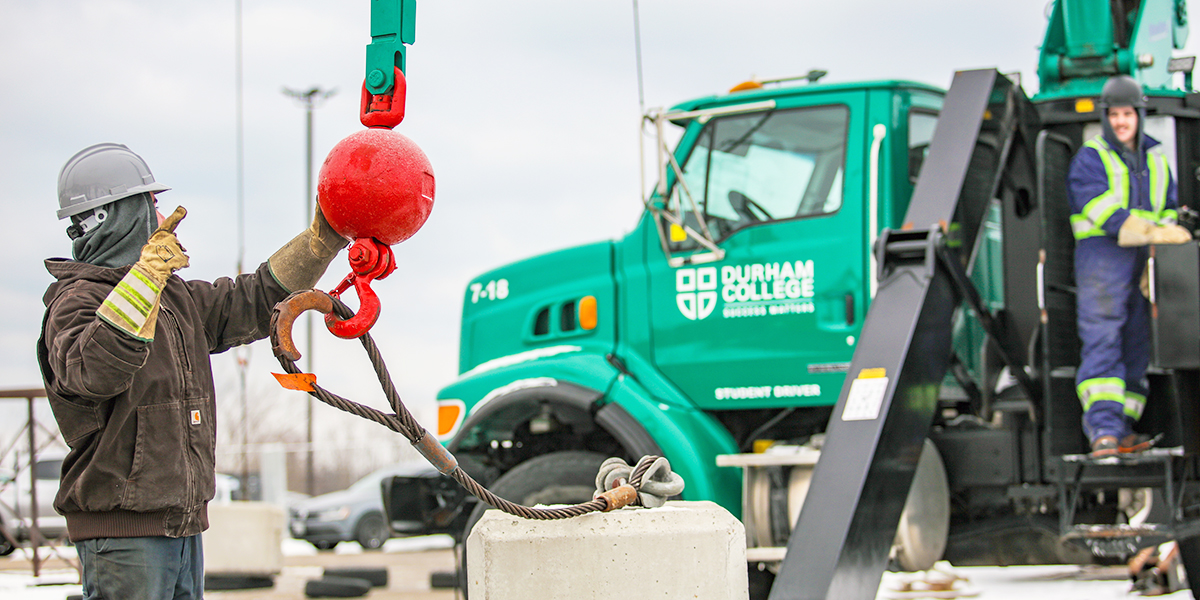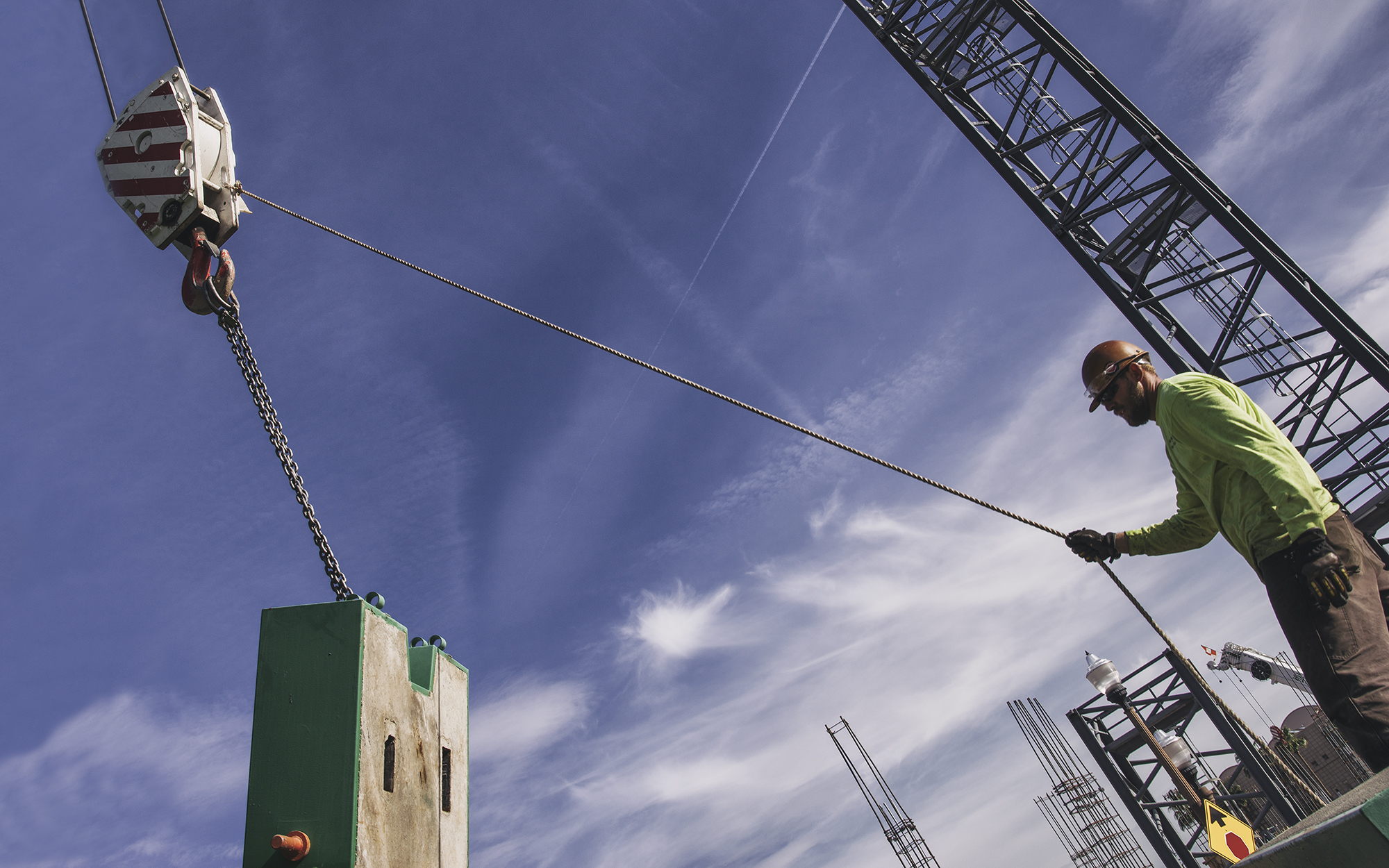A specialist hook rigger course at an attractive price
ERGON Personnel Training Center invites you to take part in a hook rigger training course to acquire new qualifications and entitlements and improve your employability. The course we offer will enable you to be employed in maintenance services for handling materials handling equipment, cargo transport companies, shipyards or ports.

Purpose of the hook rigger course
Trainees will acquire the theoretical and practical knowledge necessary to safely secure loads and cooperate with crane operators in preparing loads for loading or unloading. Trainees will learn about the different types of lifting slings and attachments and the safety regulations applicable to their use.
Who is the course for?
Participation in our course is aimed at adults who have a medical certificate confirming that there are no contraindications to work in this position. We recommend that you attend the course for maintenance staff in companies using materials handling equipment, employees of companies providing freight transport services and other people who need qualifications in the operation of hoists, cranes, hoists and slings.
Training program
The hook rigger course covers the operation of equipment designed to transport loads. Topics covered in the training course:
- equipment such as cranes, overhead cranes, cranes,
- characteristics of cranes and slings,
- determining the mass and centre of gravity of goods,
- principles of fastening and unfastening the load,
- operation of lifting accessories,
- applicable safety regulations.
At the end of the training course, the trainee has comprehensive practical and theoretical knowledge of how to operate hooks and other slings. The specialist in this position is familiar with the characteristics of the individual crane components, is able to match the attachment to the material being carried. He or she safely operates and inspects the equipment being operated.

Entitlements
The course concludes with an examination to test the knowledge acquired. After receiving a positive result, students receive a certificate issued on the basis of § 18 of the Regulation of the Minister of National Education of 18 August 2017 on continuing education in non-school forms (Journal of Laws, item 1632).
Who is a hook rigger?
The person in this position handles loads and deploys the heavy machinery used to do so. The hook rigger attaches or detaches objects that are loads to cranes by means of ropes, chains, shackles, clamps or straps. It uses winches, hoists, pulleys and other such devices.
Responsibilities of the hooker
The person in this position is responsible for selecting appropriate lifting equipment and attachments, preparing the load for loading or unloading in accordance with regulations Health and Safety and cooperate with the crane operator. An employee performing the activities of a hook rigger should:
- know the principles of safe vertical transport of materials,
- know the safe use of rope and chain slings and ancillary equipment,
- have the ability to communicate with the crane or crane operator by conventional signs.
Before starting work, the hook rigger should:
- familiarise yourself with the load,
- determine the weight, centre of gravity and hardness of the goods,
- familiarise yourself with the strength and direction of the wind,
- prepare a work plan,
- select slings and fittings,
- prepare the ropes and other tools needed for the work,
- determine the method of stacking and prepare the unloading area.
Career opportunities
Workers of this type can be found transporting heavy and specialised equipment. In addition to cranes, the hook rigger operates rigging transport equipment, so people in this profession are most often needed in shipyards and ports.

Types of slings and lifting accessories
A structure used to move, shift, lift heavy loads, which we wrongly usually refer to as a crane, can be divided into cranes, hoists, cranes or overhead cranes. These devices perform their function mainly through the use of crane slings, designed to strap, support, suspend the load being lifted. A system using strap, rope and chain slings is called a string system. Special systems, as the name suggests, are made to meet the specific needs of individual loads, and we can include grippers for irregularly shaped materials. The process of lifting, moving or transferring loads requires the use of lifting accessories - this is the case when transporting very long workpieces or extremely heavy loads. In this case, crossheads, pulleys, shackles, hooks, cables, tensioners and other lashing systems are used to enable the load to be moved safely.
During transport work, it is prohibited to:
- carrying loads over people,
- leaving his/her workplace or entrusting his/her function to another person,
- Lifting of unsecured, pinched, frozen loads,
- lifting goods of undetermined weight,
- handling loads when the sling is positioned diagonally,
- staying under the transported load,
- grasping the working sling and its components with hands,
- leaving a suspended load unattended,
- leaving the sling in a place where it can be damaged.
Why is it worth training with us?
The course we offer provides theoretical and practical preparation for working as a hook rigger. During training, we focus on the comprehensive qualification of our trainees. The training staff is made up of specialists and qualified employees from major load handling companies. Completing our training will provide you with the necessary knowledge and skills to manoeuvre the loading and unloading of materials independently and safely.
If you have any questions about our offer please contact us - our staff will be happy to help clarify any doubts. We encourage you to choose our services! ODK ERGON team





























